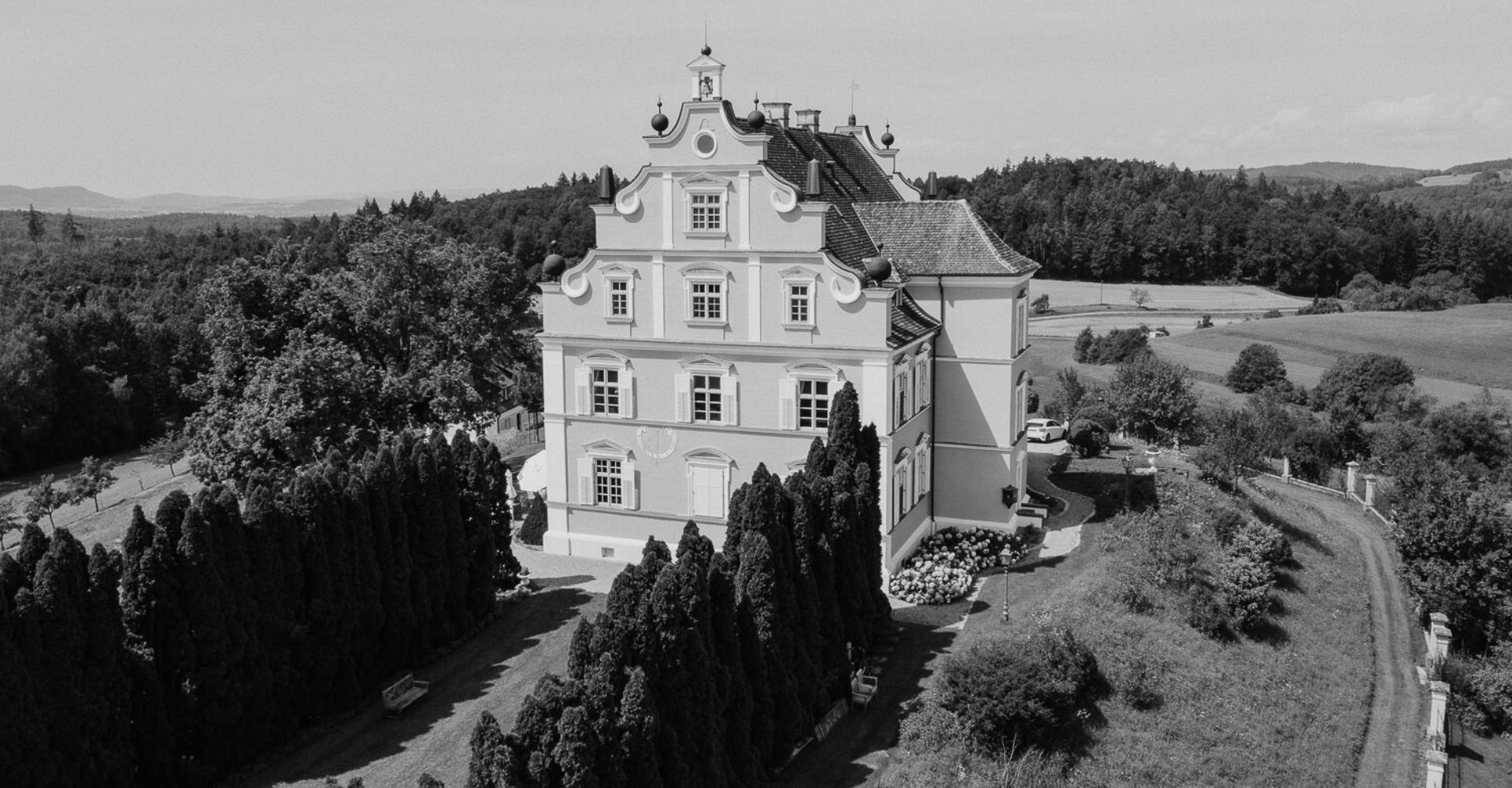
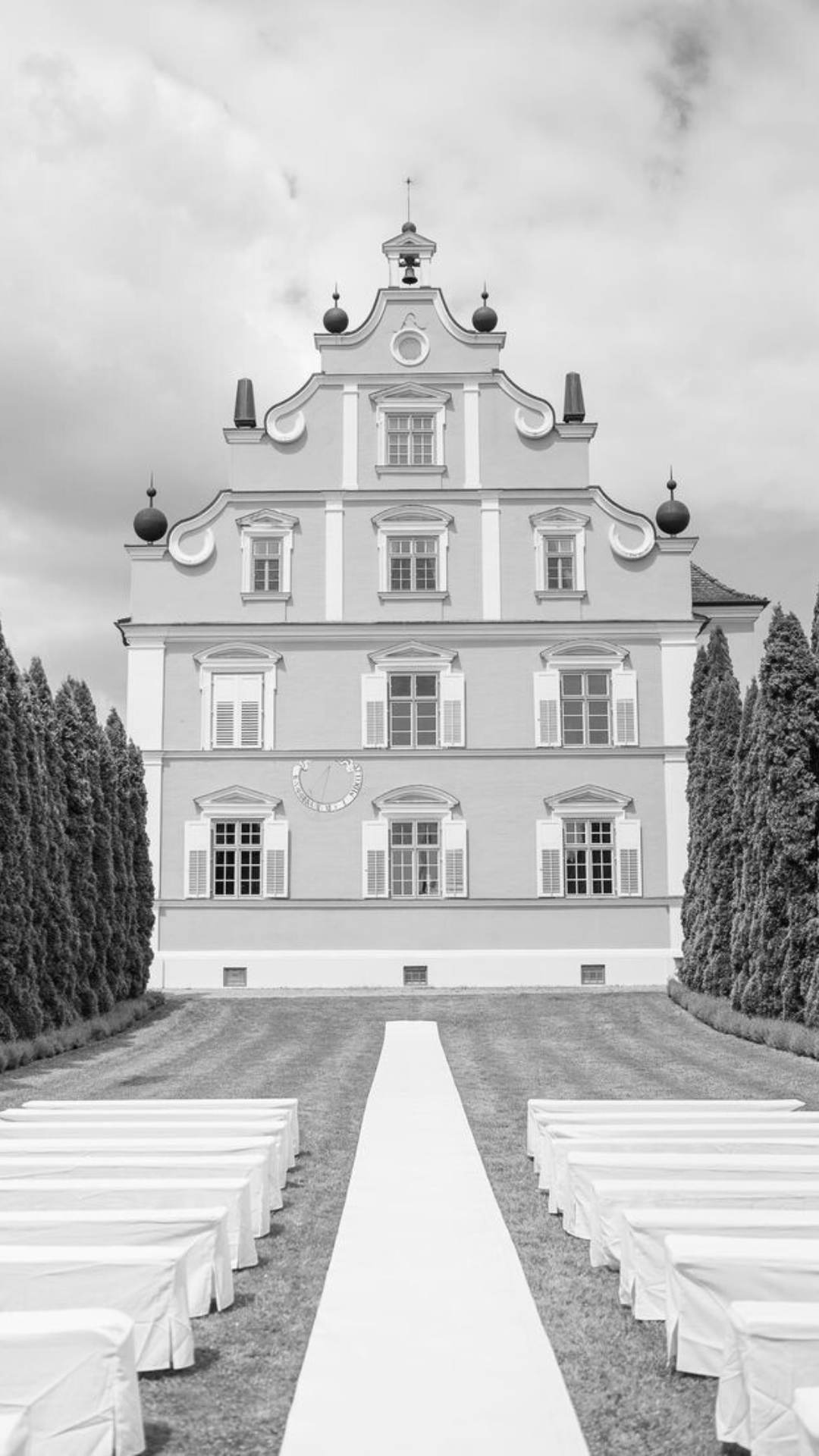
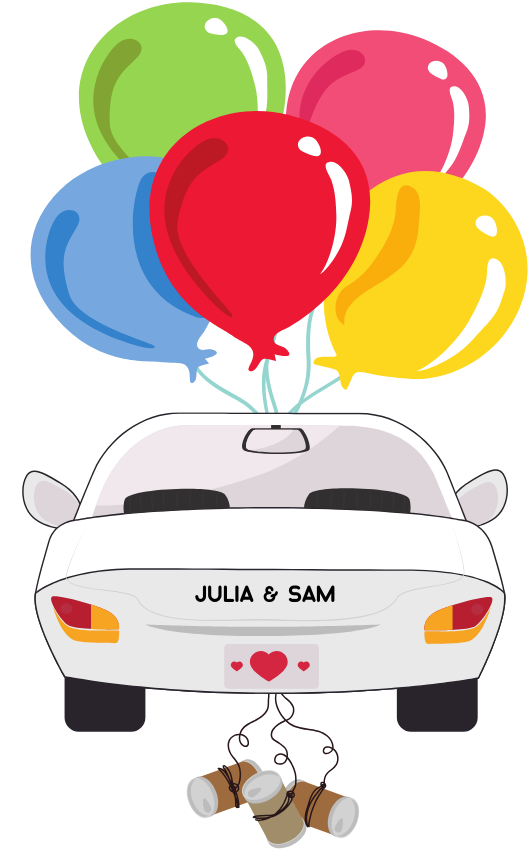
"One castle, please." "Make it pink, if you can."
Nestled amid undulating hills and verdant landscapes, the rose-hued „Schloss Freudental“ emerges like a fragment of a fairytale delicately cut and seamlessly pasted into the canvas of the countryside.
Naturally, we fell in love immediately. To me, it looks like a princess‘ perfect castle; and Sam was convinced by the library and the cellar. So, we went ahead and reserved it for our special day.
On this page, you will find further information on the venue and discover a cute and perhaps even a bit surreal fact about my family history!
Not what you were looking for?
Here you can find information about accommodation.
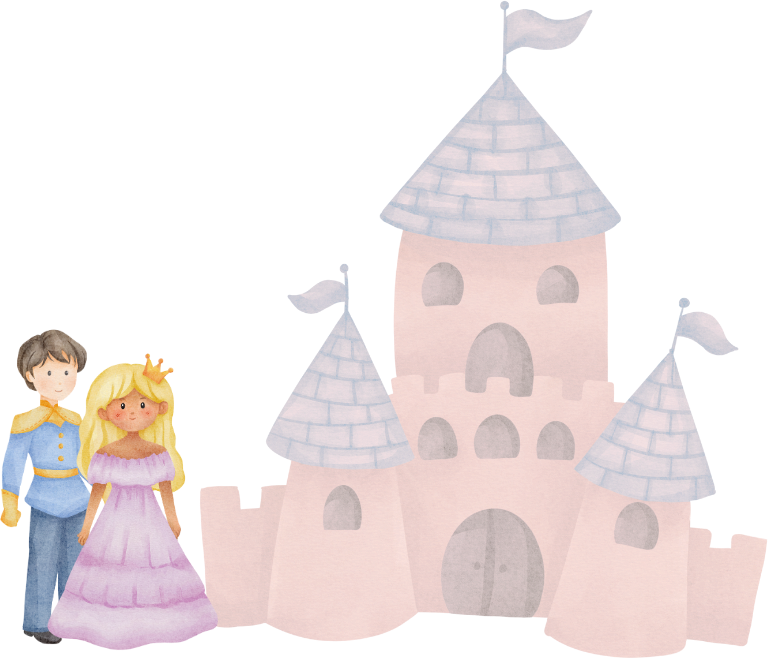


Take a Sneak Peak Inside the Castle
Schloss Freudental unfolds its historical tapestry through six stunning ground-floor rooms adorned with rich stucco work. Noteworthy are four ceiling masterpieces, narrating tales from both Christian and Greek mythology. The entrance area proudly showcases the castle’s founder’s coat of arms. Ascending the staircase, two more ceiling paintings unfold tales of a striding youth with the inscription „Festina Lente“ („Make Haste Slowly“) and the classic love story of Amor and Psyche. Venturing to the upper floor reveals a grand vestibule, a reception hall, a banquet hall, and two additional stucco-adorned rooms. Eleven ceiling paintings seamlessly weave tales from Greek legend. The meticulously restored tile stove in the banquet hall adds a touch of warmth.





Tobias Baiter & Schloss Freudental
Destiny? Cross-Generational Choices
In Summer 2023, my dad went through my great-grandparent’s documents to find out more about their past. Max and Herta Heimann fled from Prussia during World War II. We came across their wedding certificate, „Trauschein“, shown in the gallery. From it, we were able to deduce that they got married in the evangelic church in Grünhagen – which is now called „Zielonka Pasłęcka“ in Polish. I googled this church and guess what I’ve found! A building that looks strikingly similar to Schloss Freudental, judging from its pink colour and twirly roof decorations. Do you agree?



Family & Sanktuarium Zielonka
Schloss Freudental: A Tale of Time
Constructed between 1698 and 1700 by Freiherr Franz Dominik von Prassberg, Schloss Freudental in Allensbach carries a legacy steeped in history and transformation. Architect Michael Wiedenmann’s intricate designs, including opulent stucco ceilings, reflect the Baroque elegance of this enchanting castle.
From serving as a refuge for Russian prisoners during World War I to housing a children’s home and a post-war pottery workshop, the castle has witnessed diverse roles. In 1975, entrepreneur Franz Josef Schmidt initiated a meticulous restoration, leasing it to the Humboldt-Institut for „German as a Foreign Language.“ Since 2004, Irmgard Moser has turned it into a popular venue for seminars and events, gaining additional recognition through wedding expos.
Acquired by Swiss entrepreneur Philipp Schwander in June 2011, Schloss Freudental underwent a comprehensive renovation. Today, its baroque chambers and guest rooms blend historic charm with modern comfort. The castle’s expansive garden, featuring inviting spots like the Thuja Allee and the Pavilion, beckons guests to enjoy its timeless tranquility. Schloss Freudental, a captivating blend of history and contemporary allure, continues to enchant visitors as a living testament to the passage of time.
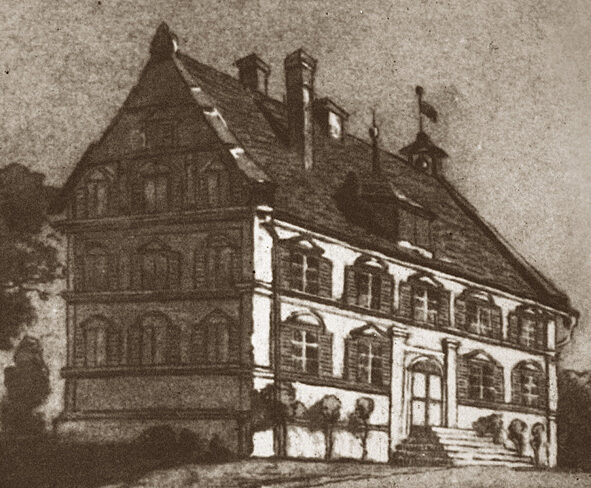
Chalk painting. Sophie Ley, 1870.
